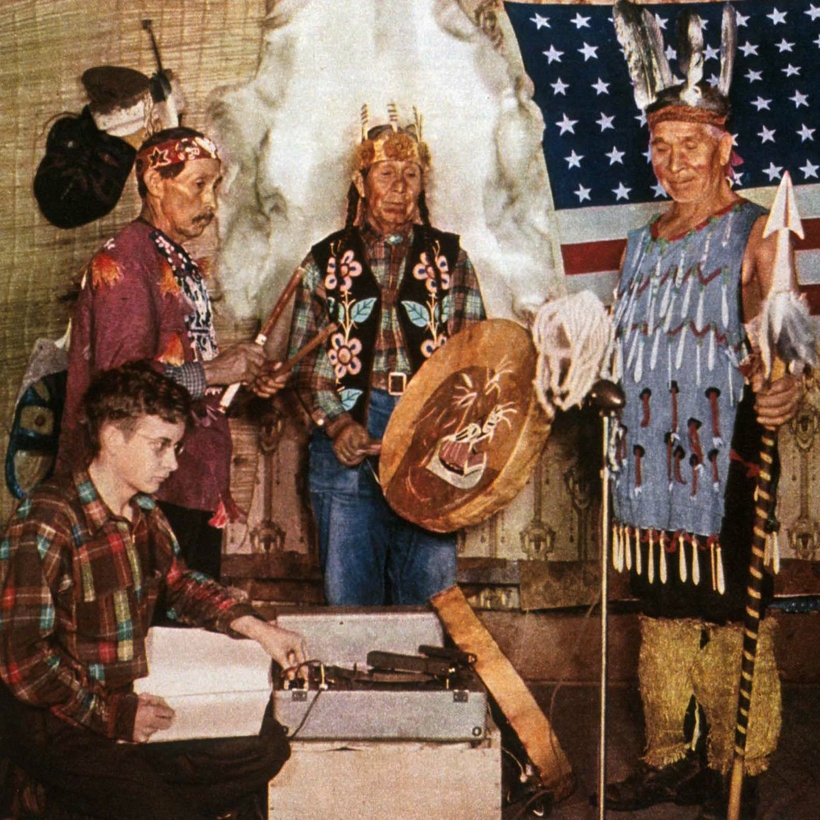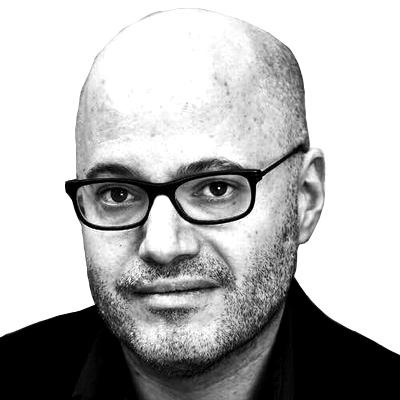Your phone can access more music than you could listen to in a lifetime. It’s a vast archive, and we have no shortage of Baedekers. For the modest price of a subscription, your streaming service tells you what music you’ll like and where it comes from, and the playlists never stop. If they think it’s worth it, Apple Music will tell you an artist’s “essentials,” their “next steps” and “deep cuts.” Apple has around 30,000 of these playlists drawing on more than 100 million tracks, and the space for them is infinite. Making them would be a dream job for a music geek, but they are, with a tweak or two, programmed by algorithms.
In 1952, though, when cutting-edge audio was the LP, there was such a geek who landed such a job. That geek—a freak, a visionary, a sage, a derelict—was Harry Smith, and his masterpiece was the Anthology of American Folk Music, six LPs released by Folkways classifying the songs as “Ballads,” “Social Music,” and “Songs.”
These categories may seem basic, but they were actually a revolution in the America of 1952. The Anthology of American Folk Music did not even reveal the race of the performers. Smith knew even then that the music of white Appalachia had blues influence, and he made sure that blues ballads were sung by Black artists. In Smith’s notes to the Anthology of American Folk Music, he called terms such as “hillbilly” and “race” “objectionable,” and talked in interviews about wanting his anthology to be a “blindfold test” for critics. But Smith saw everything.

There was no source; with his own scratchy 78s, Smith was his own source. This was someone who, at 15, started recording the Lummi tribe of the Pacific Northwest—he was the first to record them, and they banned future recording by anyone else—and kept going from there. He was flunking anthropology at the University of Washington before dropping out, while becoming an ad hoc anthropologist himself. By 1952, just in time for the folk revival, Smith was a guy who knew a guy. Dave Van Ronk said, “We learned everything we knew from the Anthology. It was our Talmud. It was our Bible.” The fiddler Peter Stampfel said, “If God was a DJ, he’d be Harry Smith.”
The folk movement was all about authenticity, and even if Bob Dylan strayed by going electric, the Anthology of American Folk Music continued to be his lexicon; he recorded at least 15 of its 84 tracks—and that doesn’t include how many lines he quoted in his lyrics—and said, “It was the language, the poetic language—it’s all poetry, every single one of those songs, without a doubt, and the language is different than current popular language, and that’s what attracted me to it in the first place.”
The tracks were recorded between 1927 and 1932, before the sound could be diluted by the marketplace, and that is exactly what folk listeners were looking for. Some listeners of the Anthology of American Folk Music tracked down Clarence Ashley, Dock Boggs, Mississippi John Hurt, and Sleepy John Estes and re-started their careers. Before the music found its way to Dylan, Smith had to know what was out there, where it came from, and who recorded the definitive version, a tricky endeavor when it came to folk music, a genre which, arguably, had many definitive versions. Someone who took on that task would have to know almost everything about everything.

Smith appeared to be that man, and he was a little too eccentric for this world, but he was just authentically weird enough for the bohemian corners of San Francisco and, mostly, New York City, where he talked his way into rooms at the Hotel Chelsea, Allen Ginsberg’s apartment, and various flophouses and S.R.O.’s.
Is being a collector a job? Sort of. But the academy was not for him, and any kind of desk job would have been more unthinkable. Smith was untamable, a hobo who canonized definitive hobo music.
“We learned everything we knew from the Anthology. It was our Talmud. It was our Bible.”
In his illuminating, definitive biography Cosmic Scholar: The Life and Times of Harry Smith, John Szwed takes on the life of someone who left no archive, who was a phantom, a loser, a sage, a polymath, a terrible houseguest, and someone who elevated collecting to an art.

Szwed, an emeritus professor of anthropology at Yale and of music at Columbia, and the author of biographies of Sun Ra, Miles Davis, Billie Holiday, and Alan Lomax, is fascinated by the weirdos who fill our playlists, and even though Sun Ra believed he came from outer space, Smith could be the weirdest and most enigmatic of them all. Szwed is a scholar, but he is also a storyteller, and he makes you feel like you are taking in Thelonious Monk at the Five Spot and running into Leonard Cohen, Patti Smith, and Robert Mapplethorpe at the Chelsea. Any one of them could be buying you dinner while you laid the next big idea on them.
When he wasn’t collecting records, Harry Smith was painting—inspired by Dizzy Gillespie or Native ceremonies—and making experimental films: abstracts, many of them destroyed, also inspired by Gillespie, and gaining the praise of the Village Voice film columnist Jonas Mekas, even though Smith introduced himself saying, “I am Harry Smith and I hate you.” Mekas, in turn, called him “the last alchemist of the Western world, the last magician.”
Smith won a Guggenheim grant to fund the alchemy in 1950, but the money soon dried up, and he mooched and defaulted on his rent while his health faltered. A two-week visit to Allen Ginsberg turned into eight months, which Ginsberg called “stormy and amazing.”

One night, in 1985, Dylan showed up with a six-pack and a tape of his new album, Empire Burlesque. When Ginsberg told him Smith was in the other room, Dylan said, “Harry Smith. Now that’s someone I’ve always wanted to meet.” But Smith would not budge from his bed and just complained about the noise, even as he was paying close attention to the sound of Dylan’s voice. Really, he could not leave the room because he was overwhelmed; he felt that, through the Anthology of American Folk Music, he essentially invented Dylan and did not want to violate their spiritual bond.
The Village Voice film columnist Jonas Mekas called Harry Smith “the last alchemist of the Western world, the last magician.”
Ginsberg eventually arranged for Naropa University to anoint Smith as the Shaman-in-Residence, but Smith found his way back to freeloading at the Chelsea—he owed them $7,000 in back rent and smelled bad—until he found himself alone and had a moment of panic, confused by the city he once knew so well. The Grammys gave him a special citation for the Anthology of American Folk Music in 1991, and he showed up with a rented tux and five cats who scampered up and down the aisles of Radio City. (Dylan was there and tried, and again failed, to meet Smith.)
By the time Smith died, in 1991, New York City, and the bohemia where he held court, was not what it used to be. Smith left us with a world that had already been discovered. The music went digital, then into streaming, and eventually it ended up on your phone, always available and greeted mostly with a shrug. Anyone with access to YouTube can listen to the Anthology of American Folk Music, but most of those people are listening to something else.
There could always be a new pile of 78s—or even some neglected MP3s—that could change the world. Would the world bother to notice?

David Yaffe is a professor of humanities at Syracuse University. He writes about music and is the author, most recently, of Reckless Daughter: A Portrait of Joni Mitchell. You can read his Substack here


